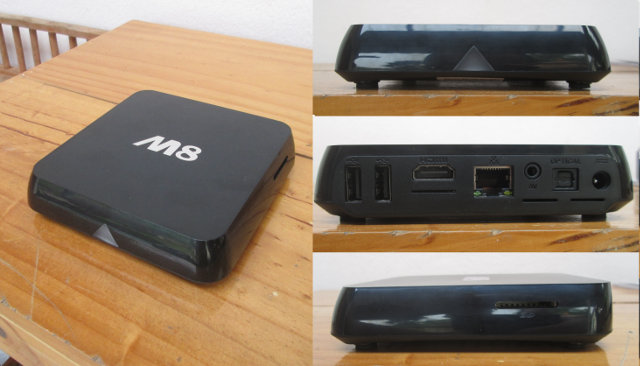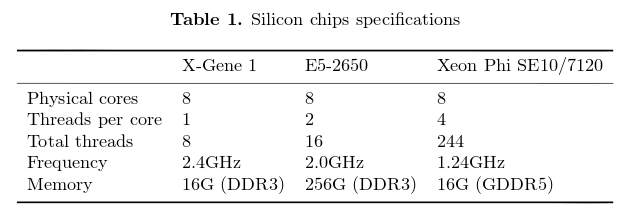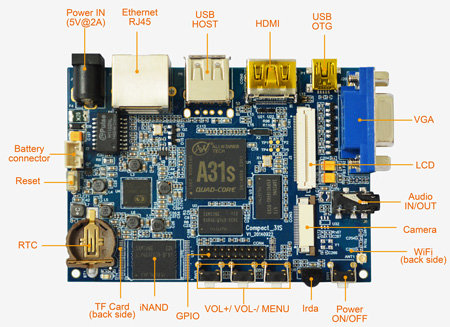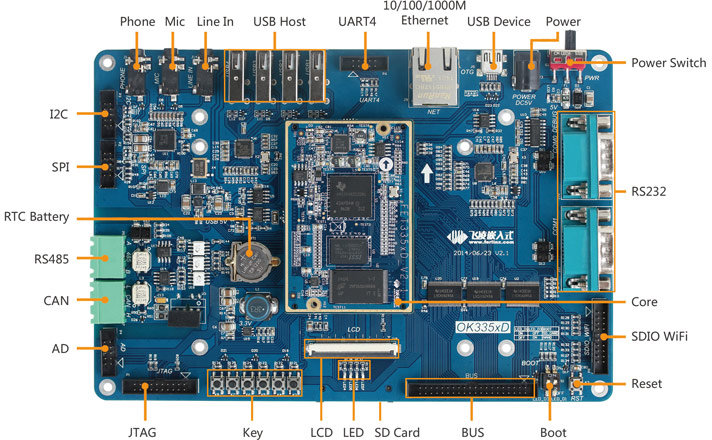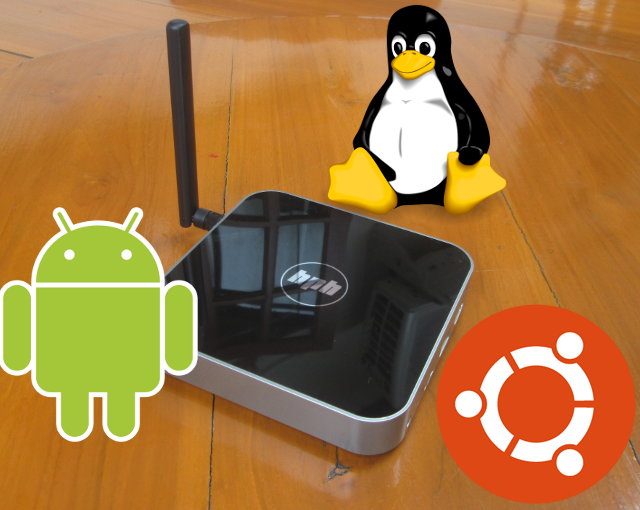Linaro 14.10 has just been released with Linux kernel 3.17 (baseline), Linux 3.10.54 & 3.14.19 (LSK, same versions as last month), and Android 4.4.2 & 4.4.4. Most of the work is a continuation of previous months working member hardware, and ARM64, but one particularly interesting point is that 90% of Debian packages have been built for ARM64, and the next version of Debian should have an official ARM64 port. Here are the highlights of this release: Linux Linaro 3.17-2014.10 updated linaro-android topic. In particular, CONFIG_IPV6=y is no longer the requirement for linux-linaro tree builds GATOR version 5.19 (same version as in 2014.08 release). gatord is fixed to build for ARMv8. dropped multi_pmu_v2 topic by ARM LT (no longer used) updated topic from Qualcomm LT (include IFC6410 board support) replaced integration-linaro-vexpress topic by integration-linaro-vexpress64. Starting from 2014.10 release, linux-linaro kernel tree will use the mainline support for 32-bit vexpress boards. integration-linaro-vexpress64 […]
Banana Pro Allwinner A20 Development Board Looks Similar to Raspberry Pi Model B+
Banana Pi development board was launched about half year ago with Raspberry Pi model B form factor, but with more powerful Allwinner A20 dual core processor, and extra interfaces such as SATA. A few months later, the Raspberry Pi foundation launched Raspberry Pi Model B+ with pretty much the same specifications, but a different board layout and connector placement, and LeMaker has now designed a new version of the AllWinner A20 development board called “Banana Pro” that’s somewhat similar to R-Pi B+ board layout, with a 40-pin header, and similar connector placement, minus a few differences, such as using two USB ports instead of four, and the addition of a Wi-Fi module. Banana Pro specifications with differences against Banana Pi highlighted in bold: SoC- Allwinner A20 dual core Cortex A7 processor @ 1 GHz with Mali-400MP2 GPU System Memory – 1 GB DDR3 Storage – micro SD card slot, SATA […]
Qualcomm Releases Userspace Adreno 320 GPU Drivers for Ubuntu
Qualcomm Developer Network has just sent the October Newsletter by email, and they had some news specific to Ubuntu / Linux support on IFC6410 development board powered by a Snapdragon 600 processor. Firs they link to a guest blog post on Qualcomm website entitled “Video Conferencing on Linux with the Qualcomm Snapdragon 600 Processor“, where Qualcomm partner eInfochips stated: Qualcomm Technologies, Inc.’s leadership in mobile market with Linux Android support is well established. As the demand for Qualcomm Snapdragon processors, a product of Qualcomm Technologies, Inc., increase in adjacent markets, the need for non-Android Linux support becomes evident. Which is always good to read. The rest of the post blog provides a few more details about their a low-latency (50ms glass-to-glass) video conferencing solution based on OpenEmbedded build with Linaro Linux Kernel, and making use of Qt5, Gstreamer, and Sofia SIP library. Further improvements will be achieved with hardware video […]
OpenELEC for M8 TV Box (Amlogic S802) with USB Tuner Support
M8 TV Box is an Android media player based on Amlogic S802 that’s relatively popular. We’ve already seen XBMC Linux ported to M8 device, for people who want a more pure XBMC experience, and automatic frame rate switching, but now OpenELEC Beta 2 is also available for the device thanks to Alex Deryskyba (Codesnake). The firmware image (OpenELEC-Meson8-K200-devel-test build 2.zip) will work on M8 / TM8, and any other Amlogic S802 devices based on K200 board. It is based on OpenELEC 4.1.2 and Linux 3.10, and a beta version, so there may still be some bugs, for example Bluetooth is not working. One very interesting feature is built-in VDR / Tvheadend DVB backends which means you should be able to use one of these USB tuners to watch Live TV from your box via satellite (DVB-S/S2), cable (DVB-C) or digital terrestrial TV (DVB-T2/ATSC) dongle. The zip files contains three files […]
Applied Micro X-Gene (64-bit ARM) vs Intel Xeon (64-bit x86) Performance and Power Usage
A group of researcher at CERN have evaluated Applied Micro X-Gene 1 64-bit ARM XC-1 development board against Intel Xeon E5-2650 and Xeon Phi SE10/7120 systems, and one of them, David Abdurachmanov, presented their findings at ACAT’ 14 conference (Advanced Computing and Analysis Techniques) by listing some of the issues they had to port their software to 64-bit ARM, and performance efficiency of the three systems for data processing of High Energy Physics (HEP) experiments like those at the Large Hadron Collider (LHC), where performance-per-watt is important, as computing systems may scale to several hundred thousands cores. Intel Xeon Phi platform based on Many Integrated Cores (MIC) computer architecture was launched the HPC market, and contrary to the table above features 61 physical cores. Applied X-Gene 1 (40nm process) was used instead of X-Gene 2 built on 28-nm process which was not available at the time. The ARM platform ran […]
Boardcon Compact 31S is an Allwinner A31s based Development Board with HDMI, VGA, and LCD Interfaces
Boardcon Embedded Design, an ODM providing industrial Computer-on-Module, and board, announced Compact A31S powered by Allwinner A31s quad core Cortex A7 processor, with 2GB RAM, 4GB eMMC, HDMI, LCD and VGA video outputs, and various other ports. Boardcon Compact A31s hardware specifications: SoC – Allwinner A31s quad core ARM Cortex-A7 @ 1 GHz with 256 KB L1 cache, 1MB L2 cache, and PowerVR SGX544MP2 GPU compliant with OpenGL ES 2.0, OpenCL 1.x, DX 9_3 System Memory – 2GB DDR3 @ 1866MHz Storage – 4GB eMMC Flash + micro SD slot Video Output – HDMI 1.4, VGA (up to 1280×800), and 40-pin FPC connector for LCD with capacitive touch screen support Audio Output – HDMI, 3.5mm headphone jack Connectivity – 10/100M/1000M Ethernet, Wi-Fi USB – 1x USB 2.0 host port, 1x USB 2.0 OTG port Camera – CMOS Camera interface Expansion – 1x 20-pin expansion connector for GPIOs Misc – Real Time […]
Forlinx OK335xD Industrial Single Board Computer Supports Android, Linux and WinCE
Forlinx, an embedded systems design and manufacturing company based in Hebei province in China, has announced OK335xD industrial (temperature) single board computer powered by Texas Instruments Sitara AM335X processor, and which appears to be a high-end version of their OK335xS-II SBC with more ports. Potential applications include communication devices, medical equipment, automotive computers, control panels, data acquisition devices, industrial control, industrial automation equipment, and more. OK335xD single board computer is composed of a CPU module (FET335xD), and a baseboard simply called “OK335xD Base Board”. Listed specifications for FET335xD computer-on-module: SoC – Texas Instruments Sitara AM3354 Cortex A8 processor @ 800MHz with PowerVR SGX530 GPU System Memory – 512MB DDR3 Storage – 256MB SLC NAND Flash Interfaces available via CoM connector: 1x USB 2.0 Host; 1x USB2.0 OTG Ethernet Dual Gigabit Ethernet 3x MMC 3x I2C, 2x SPI, 6x UART / IrDA Various GPIO pins 8x ADC 2x CAN LCD Interface […]
Preliminary Dual Boot Android & Ubuntu Firmware for Nagrace HPH NT-V6 TV Box (Rockchip RK3288)
Nagrace NT-V6 TV Box is powered by Rockchip RK3288 processor, and in my review I found the hardware to be pretty good, although some progress had to be done on the firmware. The company is still focus on perfecting Android firmware for NT-V6 and Firefly-RK3288 development board, but in meantime, they’ve released a dual boot image capable of running either Android 4.4 or Ubuntu (14.04?). To give it a try download HPH-RK3288-Android-Ubuntu_20140924.rar. I haven’t been able to try it myself, because Google Drive download is extremely slow today. Once the download is complete, you’ll probably need to flash the firmware using Rockchip AndroidTools (windows) or upgrade_tool command line utility (Linux). The dual boot firmware is based on Android firmware 1.3.9 released on September 30, plus an Ubuntu root file system. It’s not overly convenient to use Ubuntu, because you need to enter recovery mode by inserting a sharp oject (e.g. […]




